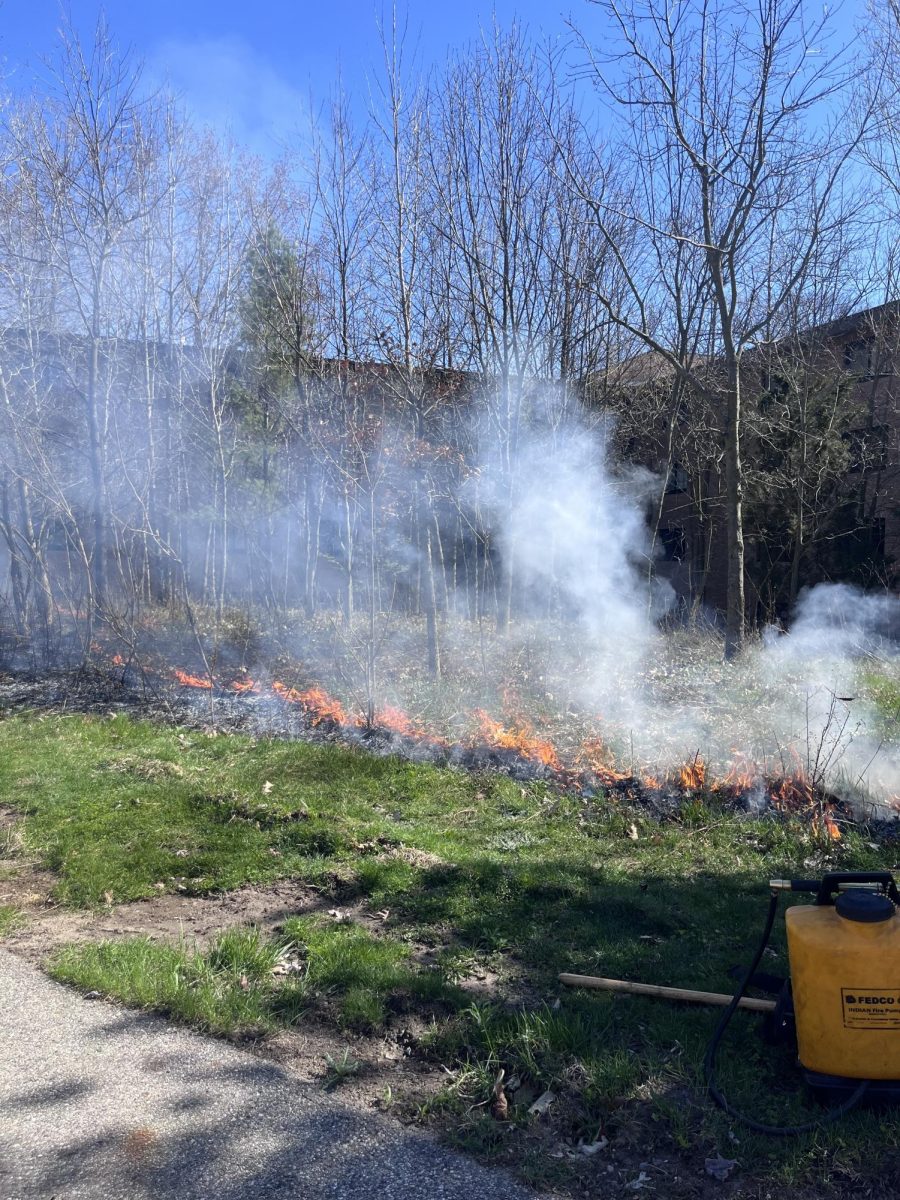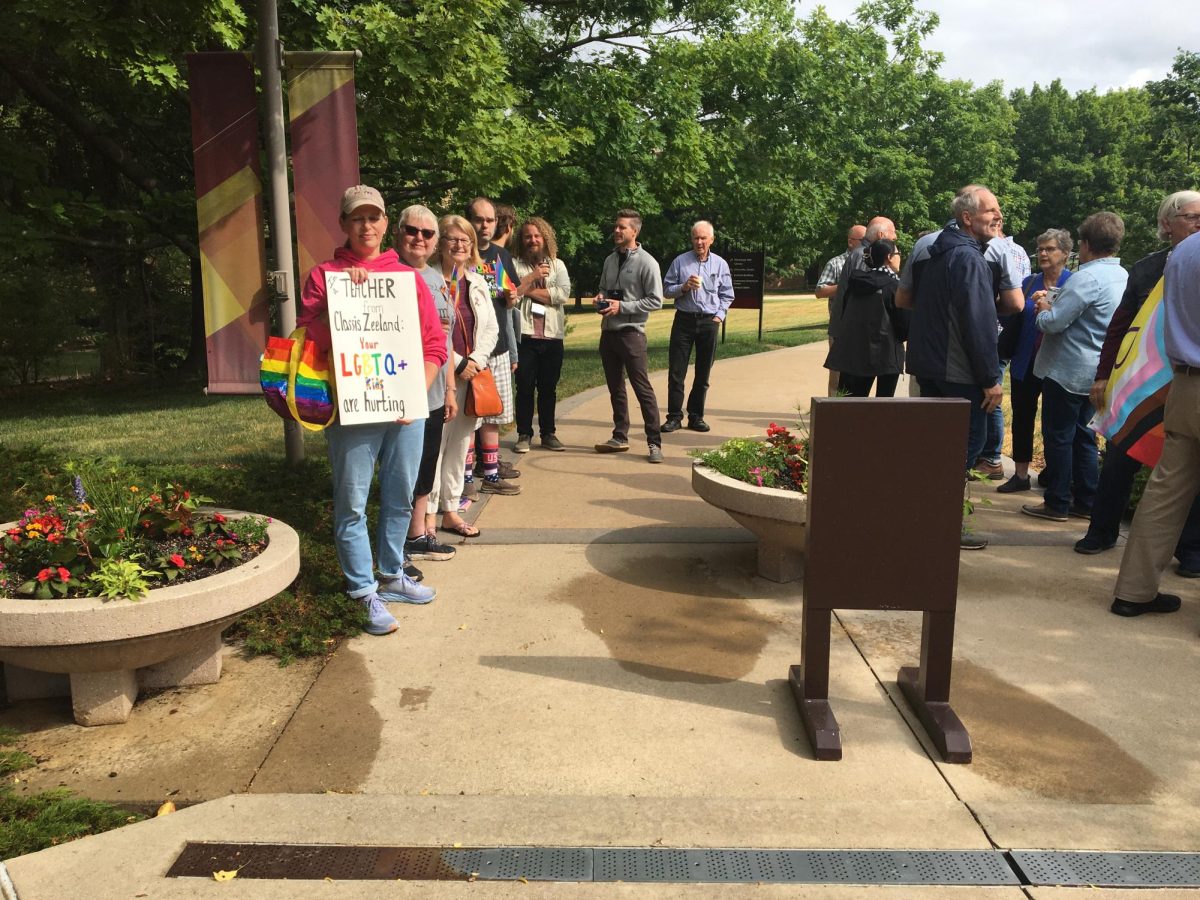For the first time in six years, ecosystems on Calvin’s campus underwent controlled burns organized by the biology department to improve the areas’ ecological health through controlling invasive species and providing new nutrients to the soil.
The burns — scattered around Calvin campus — reached roughly 0.06 acres of the Calvin Ecosystem Preserve and Native Gardens, as well as other areas planted with native species, including vanReken and a piece of land in front of the Science Building. Further, eight acres at Calvin’s Flat Iron Lake property were burned, according to Jamie Skillen, professor and director of Calvin’s Ecosystem Preserve and Native Gardens.
Planning burns like this are not easy to do, according to Skillen. To carry out a controlled burn, one must gain a permit from the City of Grand Rapids, create a burn plan with Blue Heron Ministries –– a Christian ecological restoration company –– and then wait for the right conditions. The ideal conditions are limited to a dry day with a light breeze that will “keep the fire moving and make sure the smoke doesn’t settle,” according to Dave Warners, biology professor and director of Plaster Creek Stewards. The proper conditions ensure that the underbrush burns without getting out of control, guarantee that nearby buildings and people are safe and prevent the wrong plants from burning.
The burns are carried out precisely, according to Skillen. When the fire is lit, they start the first line so the fire starts “burning against the wind” in order for the wind to not accelerate the burn. “Then you start lighting along the fire, starting to ring the area,” Skillen told Chimes. This creates a ring on three sides of the area you are hoping to burn, creating “a lot of black that can’t burn again.” Lastly, the ring is completed, so the whole area is surrounded and the wind is now “pushing the fire” towards the center. This process allows the whole area to burn while also controlling the fire itself, allowing it to lose fuel and die out.
While potentially counterintuitive, fire is often good for many different types of ecosystems.
“Prairie plants evolved with fire; it was key because regular fire kept trees and other woody plants out,” Skillen told Chimes. “It has the effect of killing a lot of the species we don’t want, whether invasive or just shallow-rooted plants like the Kentucky Bluegrass that get into our prairies.”
Fire works because the native, well-established plants have robust root systems, so the plants can survive even if the parts above ground get burned. According to Skillen, regular burns help to keep a proper balance of plants in the ecosystem and thus support many populations of native bugs, mammals and other wildlife.
Fires have a long history in North America, according to Warners. “We get heat lightning in the summer, we also get thunderstorms, so lightning is a good ignition source of fire. We also have these vast expanses of prairies in the Midwest,” Warners said. Prairies build up “tons of biomass every year” and then have nowhere to go, so it builds up. This biomass is extremely flammable which leads to having “ignition sources with very flammable fuels” creating conditions for frequent fires. Because of the frequent nature of these fires, plants have adapted to its presence, making controlled burns necessary for the health of the ecosystem, according to Warners.
Outside of keeping a balance of native plants, controlled burns also help enrich the soil, according to Warners. “It’s a combination of the soil surface being black and fertilizer,” Warners said. The black soil attracts more heat than the dead leaves that were there before and “that warmth in the soil gets the plants going,” according to Warners. The ashes from the fire bring new nutrients into the soil, also helping the plants to grow.
Native Americans would also frequently burn the land. Warners described early colonists “say(ing) that the woods have a very park-like appearance, and that you could drive a horse-drawn wagon right through.” This means that the underbrush was mostly cleared out and done so frequently. Warners said that this made a lot of sense for nomadic people because having an easily walkable underbrush makes travel much easier when moving, “but as soon as you set up a permanent residence with these big logs and all this stuff, then you don’t want the land to burn, because your house might burn.”
“It’s an act of affirming our place here,” Warners told Chimes, “and this place, and the people who lived here before us. I think using fire to enhance the native plants in a way is an act of decolonization and affirming the way that the native people took care of the land.”






